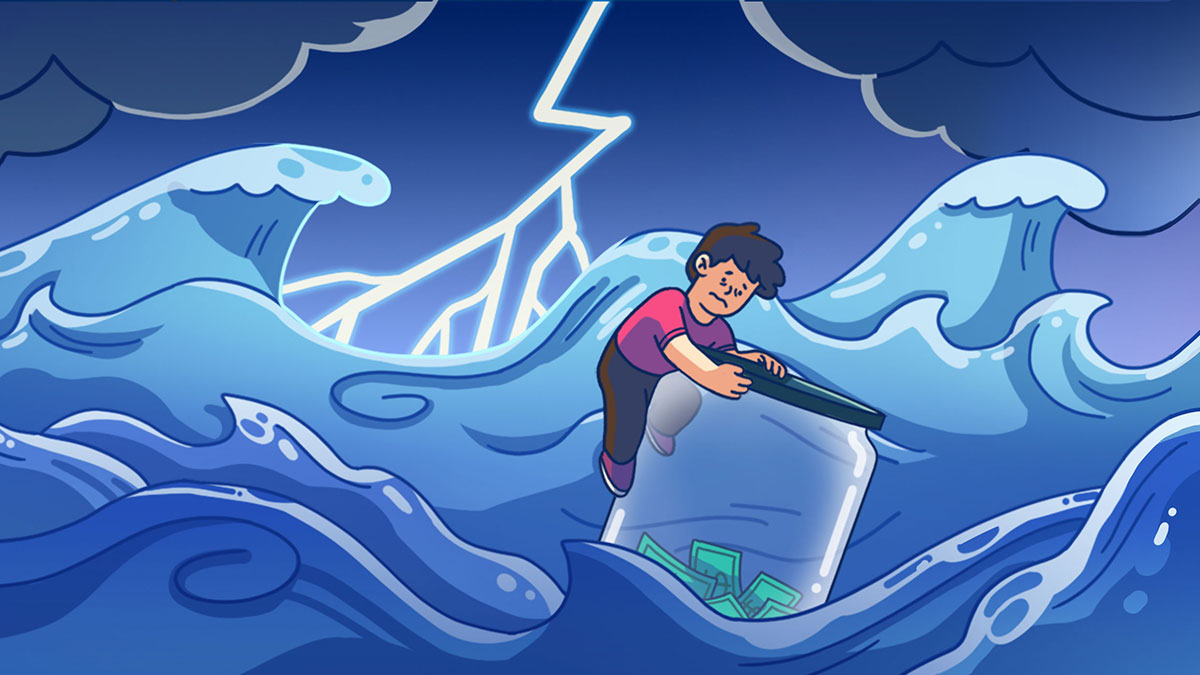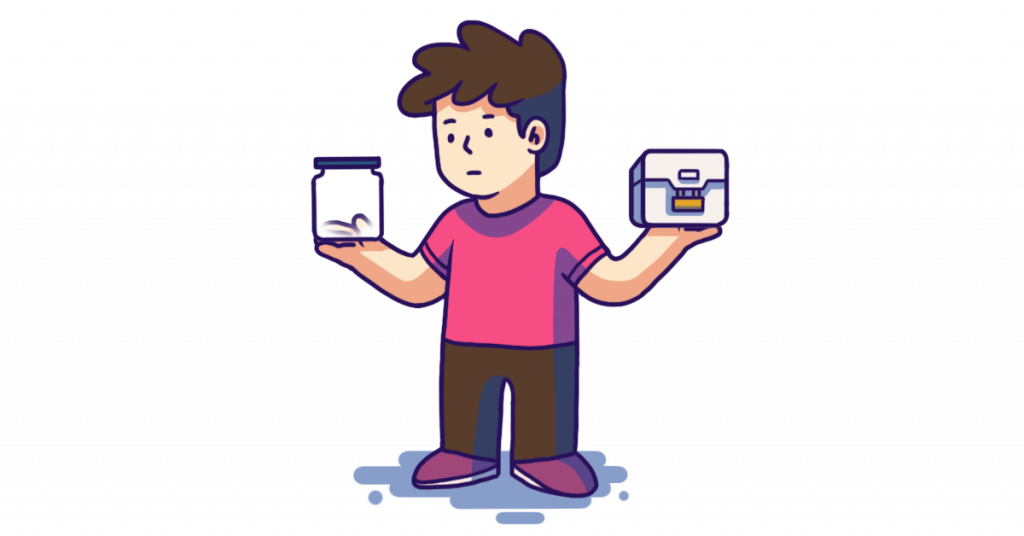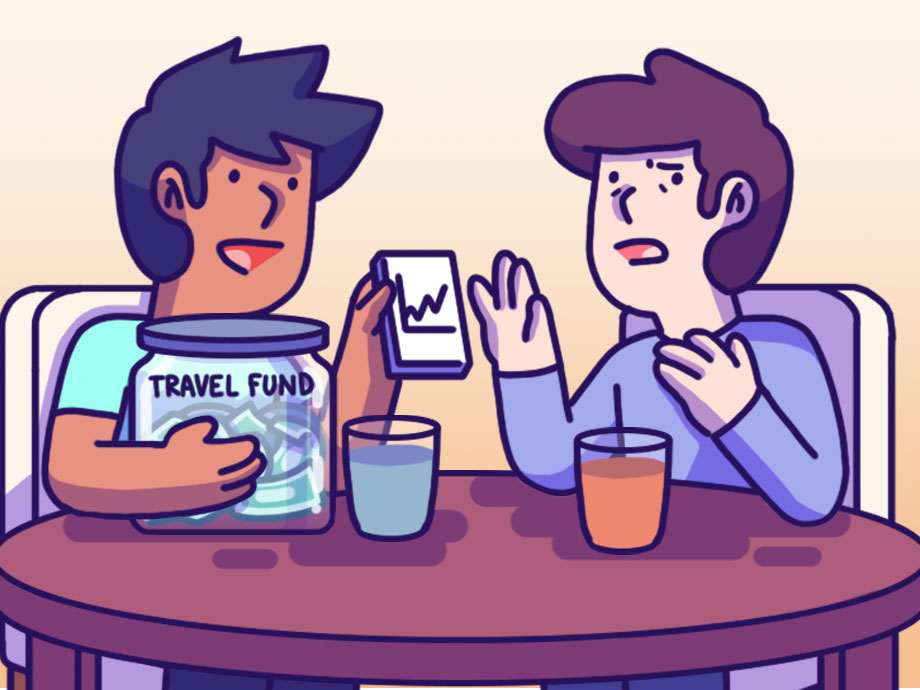Financial Planning | Personal Finance | Article
How to Build an Emergency Fund
by The Simple Sum Team | 23 May 2019 | 5 mins read

Life is unpredictable and anything can happen. Your car could require urgent repairs after an accident, you could have a medical emergency, or you could face retrenchment. These unplanned events could force you to fork out a huge chunk of money at a moment’s notice. And this is when having an emergency fund comes in handy.
An emergency fund is cash savings that you’ve put aside to pay for large, unplanned expenses. Without it, you may have to dip into your investments or the savings you have set aside to fulfil your financial goals.
Or worse, you could incur unwanted debts to pay off those expenses. In essence, an emergency fund is your safety net for any of life’s unexpected expenses.
How big should my emergency fund be?
Depending on your financial responsibilities, job nature, and risk appetite, you could set aside anywhere between three to 12 months worth of your living expenses as emergency funds
For instance, if you’re young and single, three to six months of living expenses may be enough. But if you have a family and dependents, six to 12 months of living expenses as your emergency fund may make more financial sense
Assuming you have no financial commitments and your average monthly expenses is $2,000, 6 months worth of living expenses in your emergency funds amounts to $12,000.
$12,000 may seem like a lot, especially if you haven’t been working for very long, but you shouldn’t let the seemingly daunting number stop you from even starting. Instead, start small and set bite-sized goals – like $500 every month – for your emergency fund. That way when minor emergencies arise, you’ll already have some money set aside to pay for them.
When you get a bonus or pay raise, you can put some of that extra cash into your emergency fund to help you reach your desired amount.
When the economy isn’t doing so well, consider beefing up your emergency fund for that extra peace of mind. For instance, if you only have three month’s worth of living expenses saved up, you could save an additional three month’s worth to tide you over a possible retrenchment.
Where should I keep my emergency fund?

Emergency funds need to be easily accessible so you can draw on them in times of need. So, it’s important to store your emergency fund in a high-liquidity and low-risk product. Ideally, you would keep them in a high-interest savings account.
But as interest rates of many popular savings accounts are going down, placing all your funds in a regular savings account may be unattractive. As an option, you could put a portion of your emergency funds into alternative products, albeit with slightly lower liquidity.
Here are some options to consider:
Singapore Savings Bonds (SSBs)
In a nutshell: These are bonds that are fully backed by the Singapore Government, which means they’re capital guaranteed.
Pros: They can be sold at any time without penalty and the longer you save, the higher interest rate you’ll enjoy
Cons: The interest rate for SSBs change with every month’s issue, so it’ll depend on which month you choose to place your money with them. You can check out the latest SSB rates here.
Short-term fixed deposits
In a nutshell: Fixed deposits are low risk with guaranteed returns.
Pros: The fixed interest rate may be higher than a regular savings plan. And it’s fuss-free – you don’t need to jump through hoops such as having a minimum spend.
Cons: Many fixed deposit products have early withdrawal clauses. To avoid losing some or all of your interest rates, keep the allocated emergency funds in fixed deposits between 3 to 6 months for easier access.
Insurance savings plan
In a nutshell: Think of it as a regular savings plan and an insurance plan rolled into one.
Pros: Two-in-one coverage and it’s precisely built for emergencies, while giving your money a chance to grow. They usually offer pretty attractive interest rates.
Cons: Your insurance protection is directly linked to how much money you’ve put into the plan, so you’ll have to make sure that you have a separate insurance plan to ensure that you have sufficient coverage.
Cash management accounts
In a nutshell: Accounts offered by non-bank financial institutions, where your monies are invested into low-risk funds.
Pros: You’ll earn a higher return compared to the regular bank account.
Cons: As cash management accounts are investment products, the interest rates will fluctuate depending on the performance of their underlying funds. Because cash management accounts are investment products, they aren’t protected by the Singapore Deposit Insurance Scheme (i.e. not guaranteed), so there’s a chance that you could lose some of your capital, albeit the risk is low.
Building an emergency fund: The first step in your personal finance journey
So, you’ve already built your emergency fund? Great! You’ve taken the first and most important step in your financial journey. But that’s not the end of it yet. Remember to review your expenses regularly to ensure your emergency funds remain suitably-sized for your needs.
And while it may seem a waste to let your money sit in an emergency fund when life is smooth sailing and there are no emergencies, when you do need it, you’ll be thankful that you had the discipline to stow it away. Hence the name — emergency funds. The other way to look at it: Having an emergency fund is empowering. You can have the peace of mind to invest with money that you can afford to lose or you can leave a toxic job environment at any point. All because you rightfully saved up for a rainy day.
















